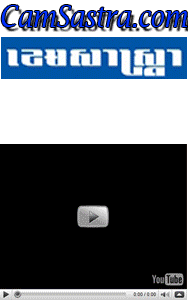Non-Formal Education
1. Objectives
Non-formal education aims to ensure that all children, youth, adults, poor people and those with disabilities realize their rights to a basic education and lifelong learning. Another objective is to provide opportunities for youth and adults to access life skills and become literate.
2. Responding to ESP Strategies and Policies
Policy 1: Ensuring Equitable Access to Education Services
- Expand public/NGO/community partnerships in formal and non-formal education in border, remote and disadvantaged areas as well as increase support for the
provision of local life skills and vocational training and basic/required professional skills responsive to the needs of the social and labor market.
Policy action:
- Guidelines on education partnerships in Non-formal education based on non-formal education management information system developed in 2011.
- Plan for Non-formal education management information system developed in 2013.
Policy 2: Improving the Quality and Efficiency of Education Services
- Reduce repetition and drop out at all education levels.
Policy action:
- Guidelines on equivalency programs developed in 2011.
- Re-entry, equivalency programs and community learning centres reviewed in2013.
Policy 3: Institutional and Capacity Development for Educational Staff for Decentralization
- -Strengthen the management and leadership capacities of educational staff at national and sub- national levels.
Policy action:
- Medium term capacity development plan for provincial NFE staff developed in 2012
3. Indicators and Targets
- 90% students graduated from re-entry programs enter the formal education.
- The literacy rate of the 15 – 45 year old age group will have increased by 2% every year.
- The number of students in equivalency programs will have increased from 10,530 to 15,000 annually from SY 2009-2010 to SY 2013-2014.
- The number of youths and adults in literacy, life skill and income-generating programs is maintained at 60,000 annually until SY 2013-2014.
- The number of Community Learning Centers will have increased from 40 in SY 2009-2010 to 90 in SY 2013-2014.
- The number of Reading Centers will have increased by 24 annually.
- The NFE-MIS is fully operational at national and sub-national level with linkages built with the EMIS.
4. Main Programs and Activities
4.1) Recurrent programs (Program based budgeting and others budgeting)
- Expansion of re-entry and equivalency programs. Activities include:
a) Operational budget support for the expansion of re-entry programs for school dropouts.
b) Development of equivalency and re-entry programs and testing based on minimum standards.
c) Enhancing curriculum and learning materials.
- Expansion of literacy/life-skills programs. Activities focus on reviewing options for enabling sustainable provision of complementary literacy/life-skills strategies including linkages with non-formal skills training and community learning centers, and facilitating Government/Development Partner /NGO / community partnerships and bilingual programs for minority groups.
- Strengthen and expand community learning centers and reading centers to enhance knowledge and provide support for newly literate learners.
- Upgrade the capacities of NFE staff. Activities include:
a) Developing NFE capacity assessment and NFE capacity development plans
b) Strengthening capacity at central, provincial and community levels for the targeting, planning and management of NFE programs
c) Strengthening NFE information systems as a basis for better analysis of learning needs, poverty targeting, assessment of cost effectiveness, program monitoring and improved coordination of non-Government initiatives.
- Strengthening the NFE system from central to local levels.
- Facilitating program support for process monitoring including NFE reports based on the results of the Department of Non Formal Education and provincial and district NFE offices.
- Providing out-of-school youth with NFE MOEYS peer-education, life-skills for HIV/AIDS/Bird Flu, in cooperation with Development Partners and related NGOs.
- Expanding promotional activities through state and private media.
4.2) Capital programs
Investment
- Construct CLC buildings and reading rooms.
- Conduct a survey into adult literacy of the 15 to 45 year old age group.
Technical Cooperation
- Strengthen capacities at central, provincial, district and community levels for the targeting, planning and management of NFE programs.
- Strengthen NFE information systems as a basis for better analysis of learning needs, poverty targeting, and the assessment of cost effectiveness, program monitoring and improved coordination with non-Government initiatives
- Support to institutional development and of management strategies to strengthen NFE structures from central to community level.
5. Program Management and Monitoring
The department of Non-Formal Education will be responsible for overall program management, including the design of interventions, targeting, planning, quality assurance and monitoring, but with an emphasis on collaboration with other departments, provincial and district offices, other ministries and community organizations/NGOs. DNFE is the designated implementing body for the NFE programs. It will also provide provinces with an annual budget allocation and assistance for program action plans. The DNFE will produce an annual report on its program progress and impact, drawing on data from the provinces.
Financial management arrangements will be reviewed. Options include a demand-driven
NFE fund or use of provincial and district PB. Guideline will be developed to optimize flexibility and responsiveness to priority needs and diversity of program delivery to
community groups and NGOs.
6. Financing Plan (million Riels)
| Activity | 2009 | 2010 | 2011 | 2012 | 2013 |
| 1. Recurrent Program | 9,721.0 | 6,860.0 | 7,724.4 | 8,504.5 | 9,471.0 |
| 1) Expansion of re-entry/ equivalency program |
1,907.6 | 1,385.9 | 1,426.8 | 1,570.9 | 1,749.9 |
| 2) Expansion of professional/ life skills literacy program |
5,256.8 | 5,184.0 | 5,598.7 | 6,164.2 | 6,866.9 |
| 3) Upgrading capacities of non-formal education staff |
278.6 | 0 | 400.0 | 440.4 | 490.6 |
| 4) Program monitoring and evaluation |
791.9 | 290.1 | 298.8 | 329.0 | 366.6 |
| 2. Capital Program | 0 | 100.8 | 3,342.3 | 3,486.0 | 3,696.0 |
| Investment | 0 | 0 | 1,196.0 | 1,196.0 | 1,414.0 |
| Technical Cooperation | 0 | 100.8 | 2,146.3 | 2,290.0 | 2,282.0 |
| Resources: Total | 9,721.0 | 6,960.8 | 11,066.7 | 11,990.5 | 13,167.0 |






